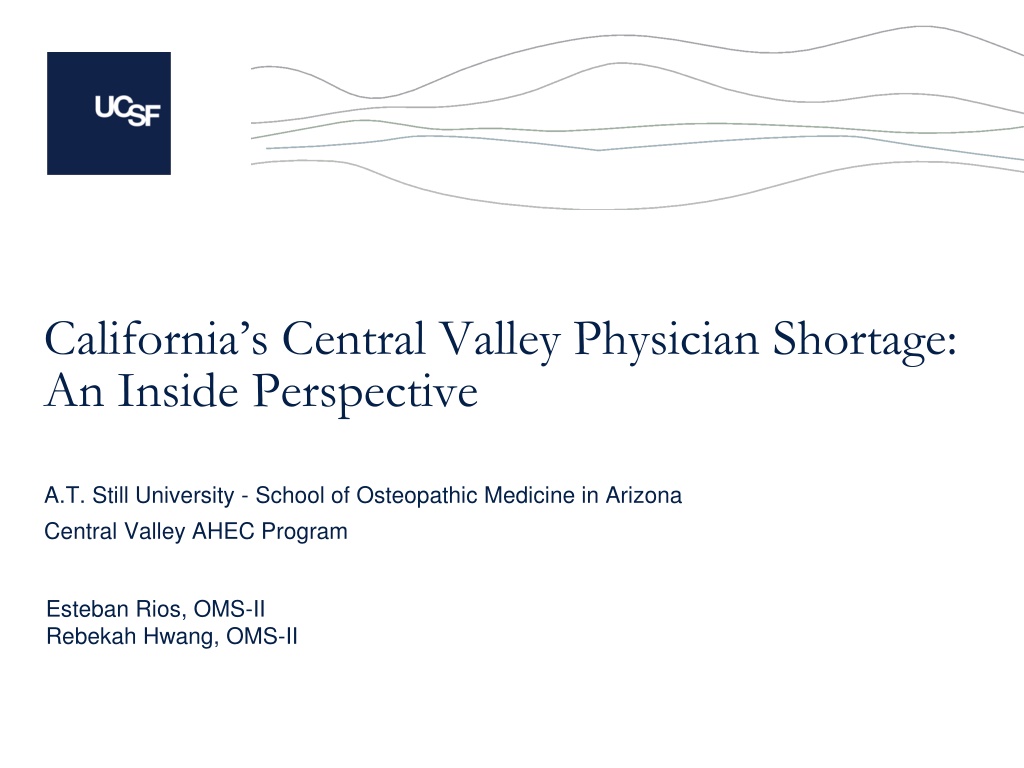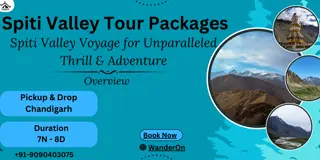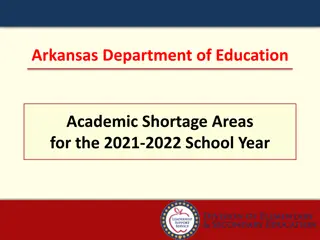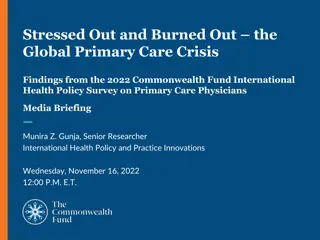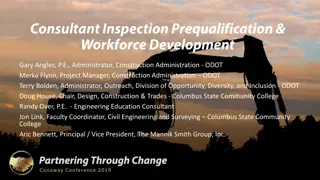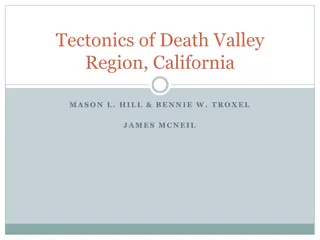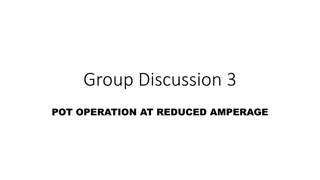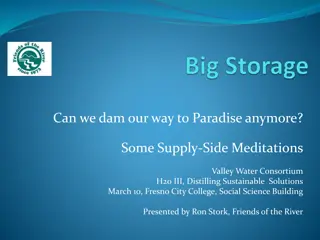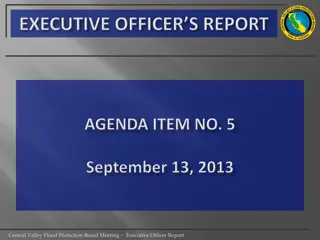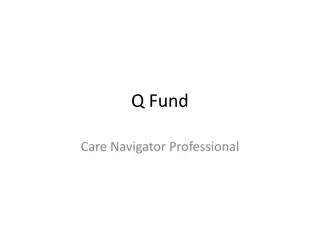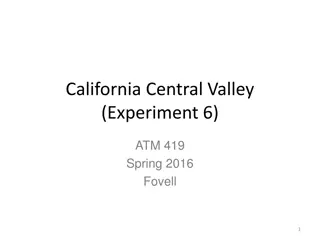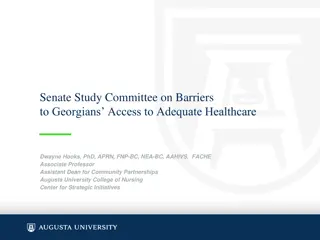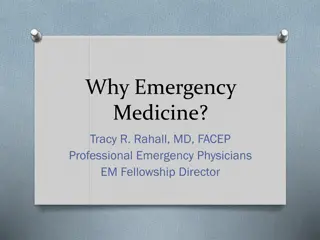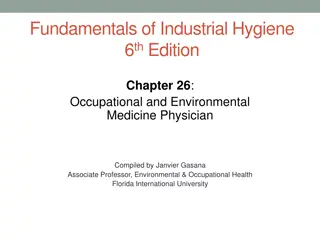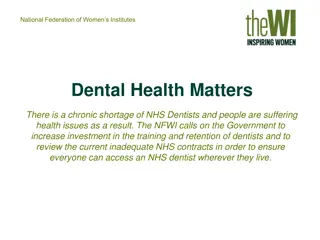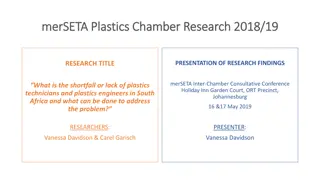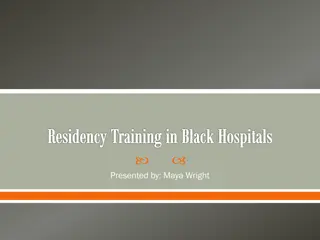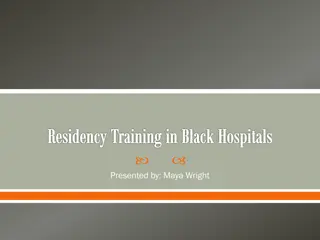Addressing Physicians Shortage in California's Central Valley
The San Joaquin Valley in California faces a severe physician shortage, with the lowest doctor-per-capita ratio in the state. To tackle this issue, efforts are being made to establish the Central Valley Medical Association, organize the first Central Valley Medical Conference, and gather insights from medical students and physicians in the region. Surveys were conducted to understand the factors influencing individuals to pursue training and employment in the Central Valley. Demographic data revealed key insights into the participants.
Download Presentation

Please find below an Image/Link to download the presentation.
The content on the website is provided AS IS for your information and personal use only. It may not be sold, licensed, or shared on other websites without obtaining consent from the author. Download presentation by click this link. If you encounter any issues during the download, it is possible that the publisher has removed the file from their server.
E N D
Presentation Transcript
Californias Central Valley Physician Shortage: An Inside Perspective A.T. Still University - School of Osteopathic Medicine in Arizona Central Valley AHEC Program Esteban Rios, OMS-II Rebekah Hwang, OMS-II
Background The San Joaquin Valley (SJV) also called the Central Valley of California spans as far south as Bakersfield and as far north as Stockton (excluding the Sacramento Valley) The SJV has the lowest doctor-per-capita ratio in California (170 for every 100,000 vs. 304) Currently, there is no fully accredited medical school based in the SJV 2
Objectives Establish the Central Valley Medical Association (CVMA). Organize first ever Central Valley Medical Conference Survey medical students in SJV Survey physicians in SJV 3
Methods A 25-item survey was sent to 5 physician networks Tulare & Kings Medical Society Fresno & Madera Medical Society Kern Medical Society Central Valley Healthcare Network Family Healthcare Network A 18-item survey was distributed to medical students in each of the four medical student programs in the SJV. A.T. Still University School of Osteopathic Medicine in Arizona (Visalia, CA) UCSF San Joaquin Valley - Program in Medical Education (Fresno, CA) UC Davis School Of Medicine - Reimagining Education to Advance Central California Health Program (Modesto, CA) California Health Sciences University College of Osteopathic Medicine (Clovis, CA) Participants were anonymously asked to identify factors that influenced their decisions to pursue and continue training/employment within the Central Valley. The survey was shared via email, QR code link, and social media. 4
Demographics: Age, Sex, Race/Ethnicity Physicians 92 participants 64% Male 44% White/Caucasian Medical Students 33 participants 21% Male 36% Hispanic/Latino 5
Demographics: Location Physicians Medical Students 6
Demographics: Other Physicians: Medical Students: M.D. 90% 30% had over 31 years of serving Majority are Internists (19%) Osteopathic 78% 45% were 1st year medical students 45% were 3rd year medical students 10% were 4th year medical students 7
Top reason to train/work in the Central Valley for both Medical Students & Physicians: Results Q: Why work in the Central Valley? Desire/Mission to serve the underserved Least satisfying factor with working/training in the Central Valley: Medical Students: - Quality of care patients receive Physicians: - Organizational leadership Lowest Likert score with identifying with one s work in the Central Valley: Medical Students: I rarely think about completing medical school elsewhere Physicians: I rarely think about looking for a job in another region . 8
Results Q: What could keep medical students & physicians in the Central Valley? Physicians: Other (13%) 14.47% 13.16% 10.53% Physician led hospitals Like-minded practice partners Ability to work after 70 Not applicable due to retirement 32.89% 28.95% 25.93% 29.63% Medical Students: Opportunity for professional advancements (~30%) 18.52% 25.93% 9
Results: General Statements Q: What is the biggest issue in our community? Physicians: Medical Students: Lack of consistency in physicians. Especially in primary care programs, it s important for there to be longitudinal relationship between physicians and their patients I take my personal responsibility to patients seriously & have worked hard for my reputation. I am less satisfied with my practice, ability to achieve leadership roles, and overall respect from the healthcare community Shortage of physicians and lack of preventative care and education within the community that are results of social determinants of health I love being in an area of more autonomy and less litigation for physicians to work in Lack of access to care in rural areas especially for immigrant farm worker populations I am so proud to be helping the Hispanics but i am so sad that Medical care has dehumanized them and made them Insurance cards and numbers only 10
Results What are physicians and medical students looking for support in? Physicians: Medical Students: More hands on experience Continue to work for increased funding and fight administrative burden, provide CME and wellness programs such as the ones they already provide. Advocate for justice through equity, diversity and inclusion within the practice of medicine . Networking opportunities Provide residency opportunities, medical student opportunities to get involved Encourage younger physicians to buy homes and settle down here Scholarships Update and hone the focus of its mission and ensure that new physicians to the area get some sort of orientation about the specific benefits of enrollment. I could still use an orientation to all the benefits that have been previously offered so I could better image what the benefits have been over the years . I m hoping this association will help me with networking to provide both educational and career opportunities to better serve the community 11
Conclusion and Next Steps Medical student to physician pipeline 2nd annual Central Valley Medical Conference Meeting: July 1st, 2023 Zoom Community engagement Follow us on social media: Instagram: @ca_cvma LinkedIn: Central Valley Medical Association Volunteer events: Health screening Diversity Celebrating women in medicine Increasing mentorship opportunities Physician Advocacy 13
